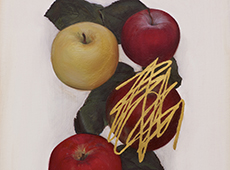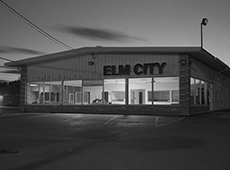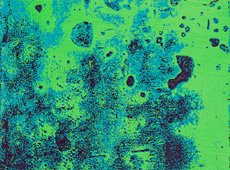Instead, sending my eyes closer into the grip of the perceptual moment is what I’m after…
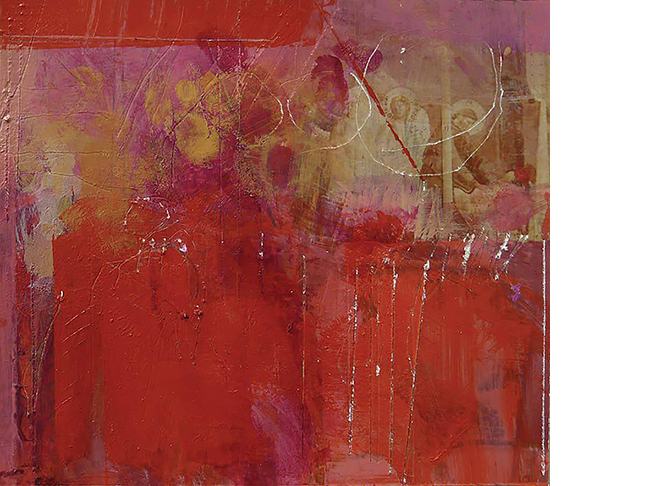
Stuart Shils,
Image courtesy the artist.
What really matters most to me is filling my eyes with joy when riding my bicycle around Philadelphia (the city where I live) on a sunny day; or on any day, looking at very ordinary, simple things along the way that feed my visual imagination. Who needs more than that?
Or, when up in airplanes looking down out the window, or when walking in other cities with a friend past scrumptious, anonymous walls – looking, noticing and tasting what is right there before the eyes affirms the immediacy of the moment. So all those questions that I’m hearing, that are popping up in conversation like slices of bread from an old-school toaster, are irrelevant. “iPhone photographs, you must be kidding, you’re a grown man, aren’t you wasting your time with this?” “Painted photographs, but are they real paintings?” “You’re not a photographer, why don’t you just do what you were good at and what we liked?” All irrelevant, because I have no interest in those questions.
Instead, sending my eyes closer into the grip of the perceptual moment is what I’m after, and of course, drawing is one way of entering that moment, but I can’t stop to draw everywhere, nor do I really want to. And given the crazy speed of the day, I find that shaping graphic summations in quick glimpses with a pocket sized digital camera or on the screen of an iPhone is often the way it goes. The camera as a perceptual tool works very differently from our eyes, and the viewfinder reorders complex unity and establishes immediate awareness of pattern. And in the takeaway moments with the camera (as with drawing), there is also the slower turning around to see what happened within that glimpse, and then the possibility of reinterrogation and mulling it over, as in Wordsworth’s line about poetry as “emotion recollected in tranquility.”
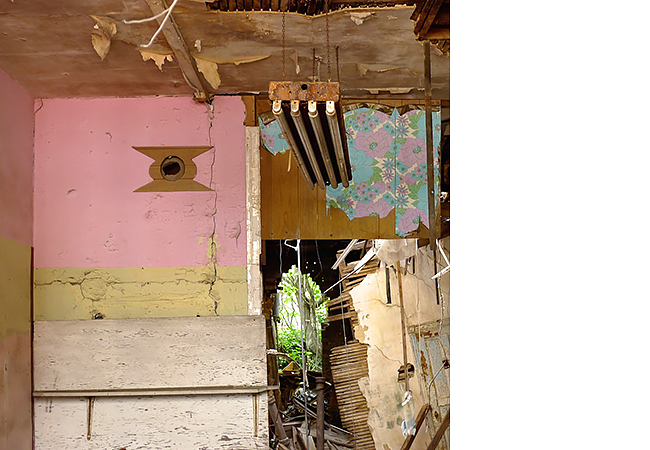
Stuart Shils, Archival Digital Photograph, 2014. Image courtesy the artist.
So that’s the part about presence, related to what’s right in front of my eyes. But then comes the other side – memory, and here I mean using the memory of other people whose work I care about. How does their art find its way into the sustained and evolving imagination? Maybe that’s what these small acrylic paintings on top of photographs are digging at, the residue of memory as improvisational studio play, acrylic paint on top of staged photographs that riff off the relationship of early Italian paintings and blocks of painted wood.
Maybe that’s what these small acrylic paintings on top of photographs are digging at, the residue of memory as improvisational studio play, acrylic paint on top of staged photographs that riff off the relationship of early Italian paintings and blocks of painted wood.
Our relationship to the art of the past is massively complex and always shifting within the search light of our curiosity. I remember Frank Auerbach’s statement when asked how he feels now about the old masters, and I’m paraphrasing: “I need them more than ever.”
However, for years I tried not to go back to Italy (since visiting as a student in 1981) for fear of becoming Neo Classicized, as with some American painters I had seen, absorbing the weight and magisterial prestige of the past by worshiping and often copying its appearance with smooth, well-mannered sobriety.
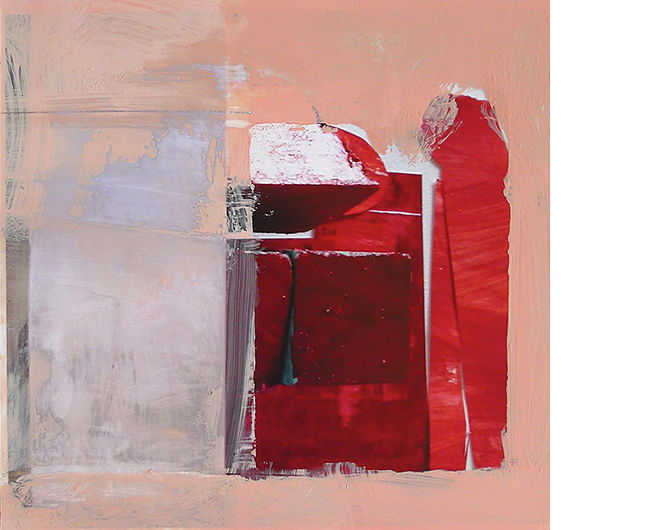
Stuart Shils,
But, I could never have anticipated what happened on return to Italy during the summer of 2007, when my eyes got blasted out of their sockets from prolonged exposure to Piero, Giotto, Duccio, and the Lorenzetti. And as important, also that summer I was carrying a small digital camera given to me by my friend, Roy Davis.
And there/here is the crucial intersection between those two experiences – presence and memory: looking through the camera viewfinder every day, many times a day and analytically considering what was going on within that flattened lens space, in combination with the gloriously, persuasive painted spaces of Giotto, Duccio, Piero and Co. – this all cast a singular spell under which every moment of visual life seemed enchanted.
…everything from a painting hanging on the museum wall to the shape of a blue door in a dirty alley seemed fluidly interwoven within the same wave of visual consideration.
Over the course of four summers it was as if the combination of the forms and visual weights of the distant past conspired with the physics of the viewfinder (and with my increasingly vigilant eye), so that everything from a painting hanging on the museum wall to the shape of a blue door in a dirty alley seemed fluidly interwoven within the same wave of visual consideration. The paintings and photographs in this show relate to all this in many ways, but beyond that, I don’t think that words can explain much, other than bringing the eyes to look at things while they, the words, disappear.
Stuart Shils: because i have no interest in those questions…, photographs, paintings and painted photographs opens at Steven Harvey Fine Arts Projects on 19 November, 2014. (Through 12/21)
Subscribe to Tilted Arc
If you like this story, please consider subscribing. We are sticklers for privacy.
We will never sell or share your e-mail address.

